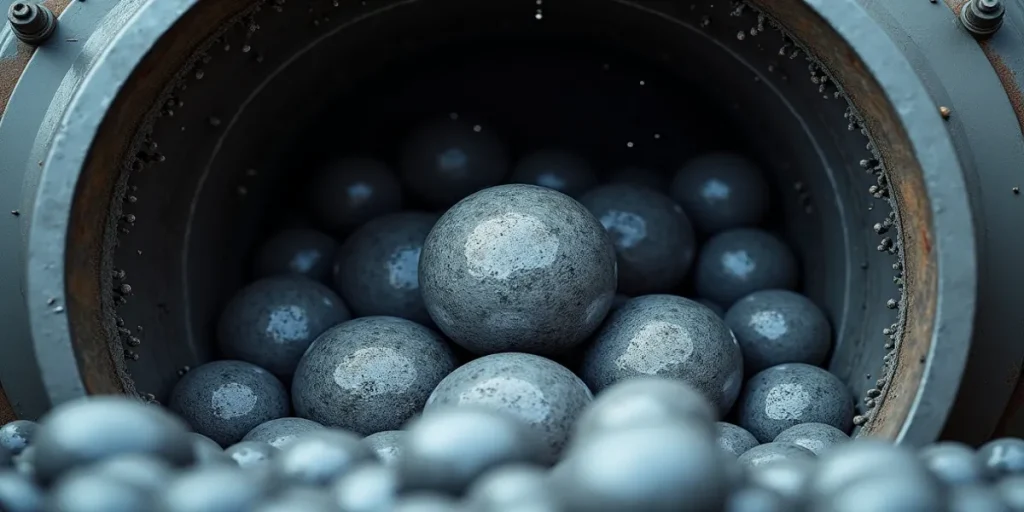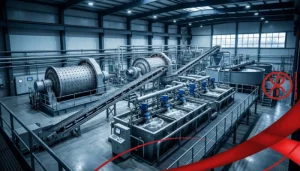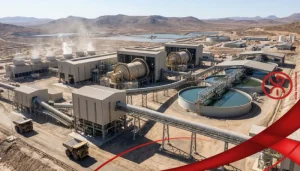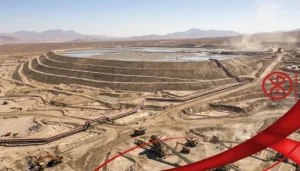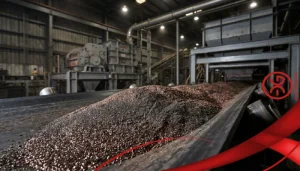Wet ball mills are specialized grinding machines that process materials in a liquid medium, making them ideal for industries like mining, ceramics, chemicals, and paints. By suspending materials in a slurry, these mills achieve finer particle sizes and more uniform dispersions compared to dry grinding. This guide explores what wet ball mills are, how they work, their applications, benefits, and detailed strategies for optimizing their performance in wet grinding processes.
What Is a Wet Ball Mill?
A wet ball mill is a cylindrical grinding device that uses a rotating drum filled with grinding media—such as steel or ceramic balls—to pulverize materials in a liquid medium, typically water or a solvent. The liquid facilitates finer grinding, reduces dust, and improves material flow, making wet ball mills a preferred choice for applications requiring high precision and uniformity.
Key Components of a Wet Ball Mill
Rotating Drum:
A cylindrical chamber, often lined with rubber, steel, or ceramic to resist wear and corrosion from wet materials.
Grinding Media:
Balls (10–100 mm) made of steel, ceramic, or zirconia that crush and grind materials through impact and attrition.
Drive System:
A motor that rotates the drum at 20–40 RPM, depending on the mill’s size and application.
Slurry System:
Includes inlets for liquid and material feed, and discharge systems (e.g., grates or overflow) for processed slurry.
Cooling System:
Maintains optimal temperatures to prevent overheating of the slurry or mill components.
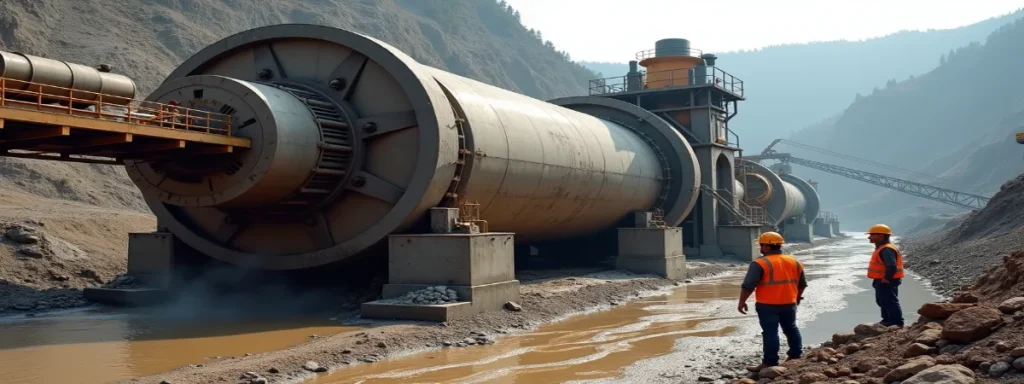
Types of Wet Ball Mills
Batch Wet Ball Mills:
Process materials in discrete batches, ideal for small-scale or specialized applications like laboratory testing.
Continuous Wet Ball Mills:
Designed for high-throughput operations, feeding and discharging slurry continuously.
Planetary Wet Ball Mills:
Compact, high-energy units for ultra-fine grinding in research settings.
Wet ball mills are essential for industries requiring fine particle sizes and uniform dispersions, such as mineral processing and paint production.
How Wet Ball Mills Work
Wet ball mills operate by rotating a drum filled with grinding media and a slurry of material and liquid. The rotation causes the media to tumble, creating impact and attrition forces that reduce particle size and mix the material.
- Impact Grinding: The media collides with the material, breaking it into smaller particles through mechanical impact.
- Attrition Grinding: Friction between media particles and the material further reduces particle size through abrasion.
- Slurry Dynamics: The liquid medium (e.g., water or solvent) suspends the material, improving flow and preventing clogging.
- Critical Speed: Operates at 60–80% of critical speed (Nc = 42.3/√D, where D is the drum diameter in meters), typically 20–35 RPM.
- Discharge: Fine particles exit as a slurry through grates or overflow systems, while larger particles remain for further grinding.
For example, in gold mining, a wet ball mill might process a slurry of ore and water at 30 RPM, using 40 mm steel balls to achieve particle sizes below 75 micrometers for flotation.
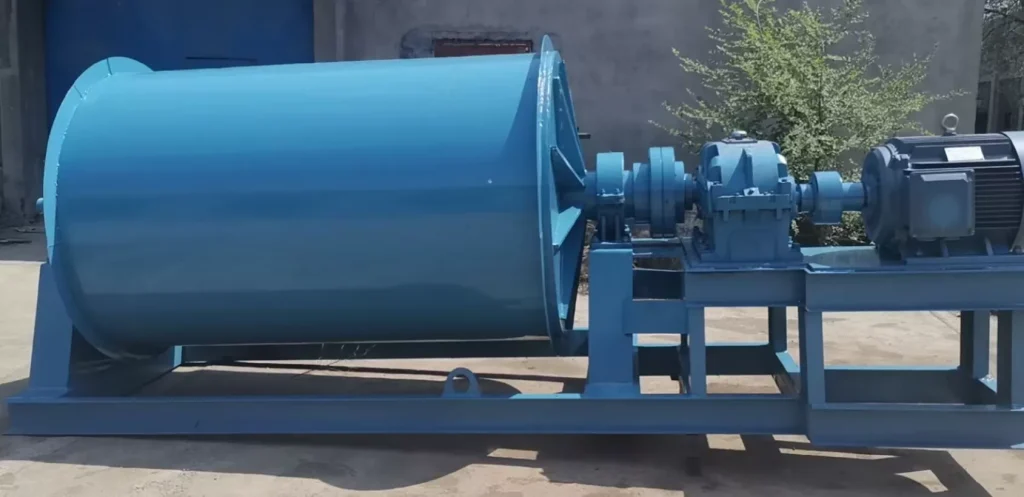
Applications of Wet Ball Mills
Wet ball mills are widely used in industries requiring fine grinding and uniform dispersions. Key applications include:
1. Mineral Processing
Ore Grinding:
Grinds ores like gold, copper, or zinc into fine particles for processes like flotation, leaching, or smelting.
Example: A wet ball mill processes 500 tons/hour of gold ore slurry, achieving 80% passing 75 micrometers for efficient gold recovery.
2.Ceramics Industry
Slurry Preparation:
Grinds and mixes clay, silica, and additives into uniform slurries for tiles, pottery, or advanced ceramics.
Example: A wet ball mill produces a ceramic slurry with particle sizes below 50 micrometers for high-quality glazes.
3.Paints and Coatings
Pigment Dispersion:
Grinds pigments into fine particles suspended in a liquid medium for smooth, vibrant paints.
Example: A continuous wet ball mill processes 1,000 liters/hour of paint slurry, achieving a fineness of 10–20 micrometers.
4.Chemical and Pharmaceutical Industries
Powder Suspensions:
Produces fine dispersions of chemicals or active pharmaceutical ingredients (APIs) for uniform formulations.
- Example: In pharmaceuticals, a wet ball mill grinds APIs to 1–5 micrometers in a water-based slurry for improved bioavailability.
5.Laboratory Applications
- Material Research: Small-scale wet ball mills are used in labs to develop new materials or test grinding properties.
- Example: A 2-liter planetary wet ball mill grinds experimental compounds to 100 nm for nanotechnology research.
Wet ball mills are critical for applications where fine particle sizes and uniform dispersions are essential.
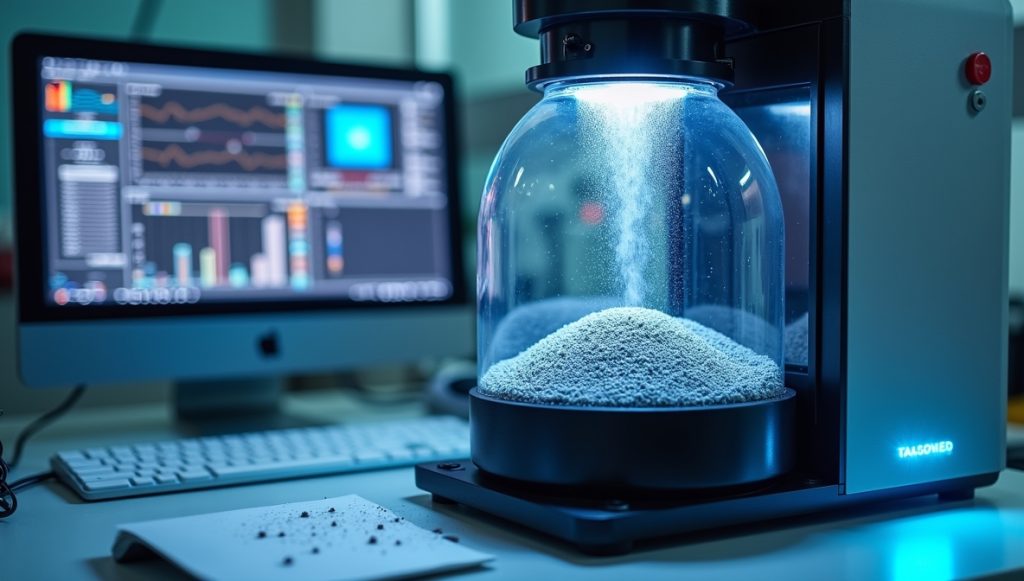
Choosing the Right Wet Ball Mill for Your Needs
Selecting the appropriate wet ball mill depends on your industry and application:
- Batch vs. Continuous: Batch mills are ideal for small-scale or specialized mixing, while continuous mills suit high-throughput operations.
- Drum Size: Choose 1–10 liter mills for labs or 1,000–10,000 liters for industrial use.
- Media Type: Steel balls for ores, ceramic or zirconia for chemicals or pharmaceuticals.
- Lining Material: Rubber or polyurethane for abrasive slurries, ceramic for high-purity applications.
Alpha Grinding Media offers high-quality grinding media, such as forged steel and ceramic balls, to enhance wet ball mill performance.
Conclusion
Wet ball mills are indispensable for industries requiring fine grinding and uniform dispersions, such as mining, ceramics, paints, and pharmaceuticals. Their ability to process materials in a liquid medium enables finer particle sizes, improved flow, and reduced dust compared to dry grinding. By selecting the right grinding media, optimizing rotation speed, managing slurry viscosity, and maintaining equipment, you can maximize the efficiency and output of your wet ball mill. Understanding the applications, benefits, and optimization techniques of wet ball mills empowers you to achieve high-quality results in your grinding operations, whether you’re processing mineral slurries or producing smooth paint dispersions.
Frequently Asked Questions
1.What is the difference between a wet ball mill and a dry ball mill?
A wet ball mill grinds materials in a liquid slurry, ideal for fine grinding and uniform dispersions in mining or paints. A dry ball mill processes powders without liquid, suitable for cement or ceramic powder production.
2.What materials can a wet ball mill process?
Wet ball mills can process ores (e.g., gold, copper), ceramics, pigments, chemicals, and pharmaceutical compounds. The liquid medium ensures fine particle sizes and uniform dispersions.
3.How can I prevent clogging in a wet ball mill?
Maintain a slurry viscosity of 1,000–5,000 cP, use dispersants to improve flow, and ensure discharge grates are appropriately sized to prevent clogging.
4.How often should I replace the grinding media in a wet ball mill?
Replace media every 500–1,000 hours, depending on material abrasiveness. For example, steel balls wear faster with hard ores, while ceramic balls last longer in chemical slurries. Regular monitoring is essential.

